BuforMin Hydrochloride
- CAS NO.:1190-53-0
- Empirical Formula: C6H16ClN5
- Molecular Weight: 193.68
- MDL number: MFCD00045591
- EINECS: 214-723-6
- SAFETY DATA SHEET (SDS)
- Update Date: 2024-11-18 17:01:59

What is BuforMin Hydrochloride?
Description
Buformin is a biguanide derivative with antihyperglycemic activity. It delays absorption of glucose from the gastrointestinal tract, increases insulin sensitivity and glucose utilization in peripheral cells, and inhibits hepatic gluconeogenesis. It can also deactivate the glycolytic pathway by suppressing glyceraldehyde 3-phosphate dehydrogenase gene expression, which can lead to lactic acidosis. Biguanides, such as buformin, are reported to inhibit the mitochondrial respiratory complex I by inhibiting ubiquinone reduction and by stimulating reactive oxygen species production via the complex I flavin. Some biguanides, including buformin, can also inhibit the mitochondrial ATP synthase. Buformin has also been examined for antitumor activity due to its ability to disrupt the unfolded protein response transcription program during glucose deprivation, which induces cell death in glucose-deprived tumor cells.
Chemical properties
White Solid
Originator
Silubin,Protochemie,Switz.
The Uses of BuforMin Hydrochloride
BuforMin Hydrochloride is a biguanide derivative with antihyperglycemic activity. It delays absorption of glucose from the gastrointestinal tract, increases insulin sensitivity and glucose utilization in peripheral cells, and inhibits hepatic gluconeogenesis. BuforMin Hydrochloride has also been examined for antitumor activity due to its ability to disrupt the unfolded protein response transcription program during glucose deprivation, which induces cell death in glucose-deprived tumor cells.
The Uses of BuforMin Hydrochloride
Buformin, clinically used for diabetes mellitus, is known to improve resistance to insulin in patients. It suppresses the expression of glyceraldehyde 3-phosphate dehydrogenase.
Manufacturing Process
105.6 g of n-butylamine hydrochloride and 79.3 g of dicyandiamide were ground intimately and mixed. The mixture was heated by means of an oil bath, gradually with stirring, and after thirty minutes when the internal temperature had reached 150°C, an exothermic reaction ensued with internal pressure rising to 178°C. The reaction mixture was removed from the oil bath until the internal temperature had fallen to 150°C and then heating was resumed at 150°C for one hour. The cooled fusion mixture was dissolved in 3 liters of acetonitrile and on cooling n-butyl-biguanide hydrochloride precipitated.
Therapeutic Function
Antidiabetic
Properties of BuforMin Hydrochloride
| Melting point: | 177-179?C |
| storage temp. | Inert atmosphere,Store in freezer, under -20°C |
| solubility | DMSO (Slightly), Methanol (Slightly), Water (Slightly) |
| form | Solid |
| color | White to Off-White |
| Stability: | Hygroscopic |
| CAS DataBase Reference | 1190-53-0 |
Safety information for BuforMin Hydrochloride
| Signal word | Danger |
| Pictogram(s) |
 Corrosion Corrosives GHS05  Exclamation Mark Irritant GHS07 |
| GHS Hazard Statements |
H302:Acute toxicity,oral H315:Skin corrosion/irritation H318:Serious eye damage/eye irritation H335:Specific target organ toxicity, single exposure;Respiratory tract irritation |
| Precautionary Statement Codes |
P261:Avoid breathing dust/fume/gas/mist/vapours/spray. P264:Wash hands thoroughly after handling. P264:Wash skin thouroughly after handling. P270:Do not eat, drink or smoke when using this product. P271:Use only outdoors or in a well-ventilated area. P280:Wear protective gloves/protective clothing/eye protection/face protection. P302+P352:IF ON SKIN: wash with plenty of soap and water. P332+P313:IF SKIN irritation occurs: Get medical advice/attention. P405:Store locked up. P403+P233:Store in a well-ventilated place. Keep container tightly closed. P501:Dispose of contents/container to..… |
Computed Descriptors for BuforMin Hydrochloride
New Products
(S)-3-Aminobutanenitrile hydrochloride 4-Methylphenylacetic acid N-Boc-D-alaninol N-BOC-D/L-ALANINOL Tert-butyl bis(2-chloroethyl)carbamate 3-Morpholino-1-(4-nitrophenyl)-5,6-dihydropyridin- 2(1H)-one Furan-2,5-Dicarboxylic Acid Tropic acid 1-Bromo-3,5-Di-Tert-Butylbenzene S-2-CHLORO PROPIONIC ACID ETHYL ISOCYANOACETATE 2-Bromo-1,3-Bis(Dimethylamino)Trimethinium Hexafluorophosphate 4-IODO BENZOIC ACID 3-NITRO-2-METHYL ANILINE 1-(2,4-DICHLOROPHENYL) ETHANAMINE (2-Hydroxyphenyl)acetonitrile 4-Bromopyrazole 2-(Cyanocyclohexyl)acetic acid 4-methoxy-3,5-dinitropyridine 1-(4-(aminomethyl)benzyl)urea hydrochloride 2-aminopropyl benzoate hydrochloride diethyl 2-(2-((tertbutoxycarbonyl)amino) ethyl)malonate tert-butyl 4- (ureidomethyl)benzylcarbamate Ethyl-2-chloro((4-methoxyphenyl)hydrazono)acetateRelated products of tetrahydrofuran

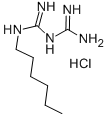
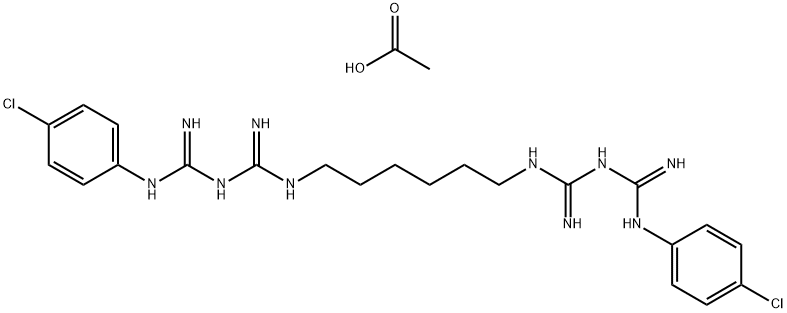
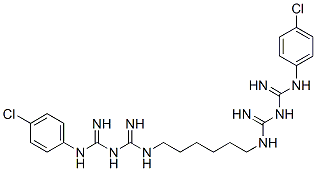
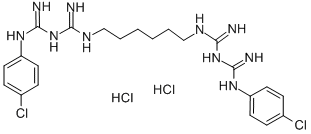
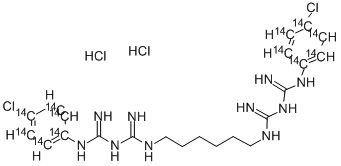
![3-(4-(2-CHLOROBENZYLOXY)PHENYL)-N-PHENYL-5-(PIPERIDIN-1-YL)-2,3-DIHYDRO-[1,2,4]TRIAZOLO[4,3-A][1,3,5]TRIAZIN-7-AMINE](https://img.chemicalbook.in/StructureFile/ChemBookStructure8/GIF/CB6740173.gif)

You may like
-
 Buformin Hydrochloride CAS 1190-53-0View Details
Buformin Hydrochloride CAS 1190-53-0View Details
1190-53-0 -
 Buformine HCl 98% (HPLC) CAS 1190-53-0View Details
Buformine HCl 98% (HPLC) CAS 1190-53-0View Details
1190-53-0 -
 Buformin hydrochloride CAS 1190-53-0View Details
Buformin hydrochloride CAS 1190-53-0View Details
1190-53-0 -
 1975-50-4 98%View Details
1975-50-4 98%View Details
1975-50-4 -
 2-HYDROXY BENZYL ALCOHOL 98%View Details
2-HYDROXY BENZYL ALCOHOL 98%View Details
90-01-7 -
 2-Chloro-1,3-Bis(Dimethylamino)Trimethinium Hexafluorophosphate 221615-75-4 98%View Details
2-Chloro-1,3-Bis(Dimethylamino)Trimethinium Hexafluorophosphate 221615-75-4 98%View Details
221615-75-4 -
 14714-50-2 (2-Hydroxyphenyl)acetonitrile 98+View Details
14714-50-2 (2-Hydroxyphenyl)acetonitrile 98+View Details
14714-50-2 -
 118753-70-1 98+View Details
118753-70-1 98+View Details
118753-70-1